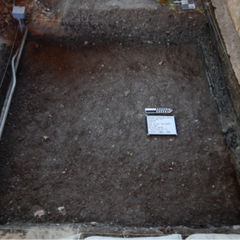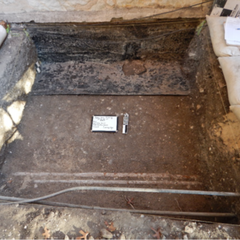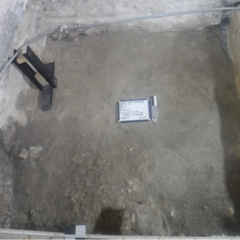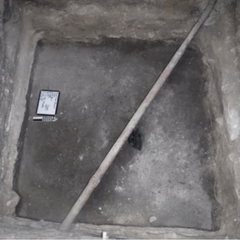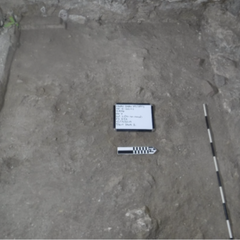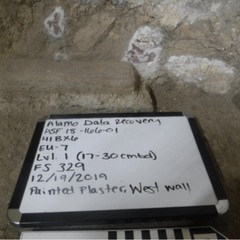During the week of December 16, archaeologists from the University of Texas at San Antonio’s Center for Archaeological Research (UTSA-CAR) worked on archaeology monitoring as well as shovel testing and excavations in several of the areas around the perimeter of Alamo Plaza. In the northern area of the Plaza, two areas were active, with shovel testing and monitoring occurring to determine if there were any significant finds. It appears that this area is similar to much of the rest of the perimeter, containing caliche base placed during previous improvements. No features or artifacts were encountered in this area. Placement of bollards began at the northwest corner of the Plaza.
In addition to the work on the north side of Plaza, UTSA-CAR completed additional investigations of a feature that had been encountered early in the project. The feature consisted of an alignment of limestone rock, and likely represents a portion of the foundation of a structure that appears on the 1885 Sanborn Fire Insurance Map as a saloon and boarding house. Previous damage to the foundation is evident by the presence of an iron utility line that cut through the center of the feature. The base of the foundation was found and the archaeologists were able to document the remnants of the foundation portion uncovered.
UTSA-CAR broke for the holiday break on December 20th, although some archaeological monitoring occurred on December 26 and 27 in Area 6, located on the north side of the Plaza. No significant archaeological deposits or features were encountered. Work is progressing with the installation of the steel bollards in several of the areas around the Plaza.
Excavations conducted by Raba Kistner Archaeologists for the week of December 16, 2019, focused on excavation unit 1–3 and unit 7. Excavations for unit 1 continued with the completion of Level 3 (15–19 inches below datum) (Figure 1) and Level 4 (19–23 inches below datum). Deposits within the northern portion of the unit continued to be mixed as a result of the 1995 excavations by UTSA-CAR; however, once excavations cleared the disturbance from the existing utilities, archaeologists observed intact soil deposits in the southern boundary of the unit approximately 5.9 inches wide.

